Our examination of parasitic copepods will conclude this month with an examination of those ‘bugs’ known to infest soft corals, gorgonians and Tridacna clams. Oddly, no reports are known to me of hobbyists observing any of these parasites, and no information has been presented in hobby literature that I am aware of.

Figure 1. Paclabius tumidus, a parasite of Tridacna squamosa. The female of this species can reach 6mm (1/4″) in length!
This brings up a couple of questions: Are these copepods restricted to geographical areas where collection of livestock for aquaria is not practiced? Or are we hobbyists, as a group, in need of honing our powers of observation? The goal of this article is to present copepods known to infest marine invertebrates (other than stony corals) popularly found in our captive reefs. Perhaps lack of documentation of these parasites within aquaria is simply due to their small size (usually, but not always, less than 1 millimeter in length). In addition, these copepods sometimes assume the color of their host, possibly indicating ingestion of host tissues.
A listing of parasites found on (or in) soft corals, anemones, zoanthids, gorgonians, and Tridacna clams is found at the conclusion of this article in Table 1.
I have made every attempt to update the taxonomic status of copepods listed in this article, and, in many cases, the status of the host as well. Often, the original Latin name of the animal is listed in parentheses. Sizes of the copepods are the maxima reported.

Figure 2. Tridacna and other clams are sometimes infested with parasitic copepods. Photo by the author.
Parasites of Tridacna and Hippopus Clams
It should come as little surprise that Tridacna clams can be victims of parasitic copepods. It would seem that any animal not enduring parasitic infestations would be the exception.
Examples of Tridacna parasites include protozoa (Fatheree, 2006) and Pyramidellid snails (Tathrella iredalei; Heslinga et al., 1990). However, little popular literature offers information concerning copepod parasites of clams popularly kept in aquaria including species of genera Tridacna and Hippopus.
We’ll begin our examination with copepods found in genus Anthessius.
Anthessius alatus
- Hosts: Tridacna gigas, T. maxima, T. noae (taxon no longer recognized), and T. squamosa
- Order: Poecilostomatoida
- Family: Anthessiidae
- Locality: Red Sea (T. noaea); Madagascar (T. squamosa); Eniwetok Atoll, Marshall Islands (T. squamosa, T. maxima, T. gigas), and New Caledonia (T. squamosa and T. maxima)
- Reference: Humes, 1973
Anthessius amicalis
- Hosts: Tridacna enlongata (= T. maxima), T. maxima, T. squamosa and Hippopus hippopus
- Order: Poecilostomatoida
- Family: Anthessiidae
- Locality: Eniwetok Atoll, Marshall Islands; New Caledonia; Red Sea
- Reference: Humes, 1973
Anthessius solidus
- Host: Tridacna squamosa
- Color: Opaque, with red eye
- Order: Poecilostomatoida
- Family: Anthessiidae
- Locality: Eniwetok Atoll, Marshall Islands
- Reference: Humes, 1973
Lichomolgus hippopi
- Host: Hippopus hippopus
- Order: Poecilostomatoida
- Family: Lichomolgidae
- Reference: Humes, 1976
Lichomolgus tridacnae
- Hosts: Tridacna gigas and Tridacna squamosa
- Color: Opaque, with red eye
- Order: Poecilostomatoida
- Family: Lichomolgidae
- Locality: Eniwetok Atoll, Marshall Islands
- Reference: Humes, 1972
Paclabius tumidus
- Hosts: Tridacna squamosa; Tridacna sp.
- Maximum Reported Size, female: 6mm (Kossmann, 1877)
- Maximum Reported Size, male: 2.11mm
- Color: Opaque, with red eye
- Order: Poecilostomatoida
- Family: Lichomolgidae
- Locality: Philippines (Kossmann); New Caledonia, (Humes)
- Reference: Humes, 1973; Humes and Stock, 1973, Kossmann, 1877
Tridachnophilus or Tridacnophilus
Nair (1988) moved Anthessius spp. associated with Tridacna clams to a new genus – Tridachnophilus. However, this synonym is no longer accepted, and Anthessius is correct.

Figure 4. Gorgonians (including sea fans, sea whips, etc.) can be hosts to parasitic copepods. Photo courtesy of Michael P. Janes (www.aquatouch.com).
Parasites of Gorgonians
I’ve taken the liberty of including hexacorals Antipathes in this grouping, though it is technically incorrect. Gorgonians include sea fans, sea whips, and others. In any case, gorgonians are potential victims of copepod parasites.
Acanthomolgus aequiseta
- Host: Muricea laxa
- Order: Poecilostomatoida
- Family: Rhynchomolgidae
- Reference: Stock, 1975
Acanthomolgus affinis
- Host: Plexaura homomalla
- Order: Poecilostomatoida
- Family: Rhynchomolgidae
- Reference: Stock, 1975
Acanthomolgus arctatipes
- Host: Echinogorgia sassapo
- Order: Poecilostomatoida
- Family: Rhynchomolgidae
- Reference: Humes, 1974
Acanthomolgus astrictus
- Host: Acanthogorgia aspera
- Maximum Reported Size, female: 0.99mm
- Maximum Reported Size, male: 0.78mm
- Color: Mimics (attributable to?) the coloration of the host: Slightly reddish, egg sacs reddish-brown or gray, red eye
- Order: Poecilostomatoida
- Family: Rhynchomolgidae
- Reference: Humes and Stock, 1973
Acanthomolgus bayeri
- Host: Pseudoplexaura porosa
- Order: Poecilostomatoida
- Family: Rhynchomolgidae
- Locality: Bermuda
- Reference: Humes, 1971
Acanthomolgus bilobipes
- Hosts: Antillogorgia acerosa and Antillogorgia elastica
- Maximum Reported Size, female: 0.98mm
- Maximum Reported Size, male: 0.79mm
- Color: Translucent to very light tan, the eye is red.
- Order: Poecilostomatoida
- Family: Rhynchomolgidae
- Locality: Curacao, West Indies
- Reference: Humes and Stock, 1973
Acanthomolgus combinatus
- Host: Echinogorgia sassapo
- Order: Poecilostomatoida
- Family: Rhynchomolgidae
- Reference: Humes, 1974
Acanthomolgus dionyx
- Host: Pseudopterogorgia americana
- Order: Poecilostomatoida
- Family: Rhynchomolgidae
- Reference: Stock, 1975
Acanthomolgus eminulus
- Host: Muricea california
- Order: Poecilostomatoida
- Family: Rhynchomolgidae
- Reference: Humes and Ewbel, 1977
Acanthomolgus gentilis
- Host: Umbellulifera striata
- Order: Poecilostomatoida
- Family: Rhynchomolgidae
- Locality: Madagascar
- Reference: Humes and Stock, 1974
- Comment: Also a parasite of soft corals such as Dendronephthya
Acanthomolgus hales
- Host: Solenocaulon tortuosum
- Maximum Reported Size, female: 0.84mm
- Maximum Reported Size, male: 0.67mm
- Color: Opaque in transmitted light, eye is red
- Order: Poecilostomatoida
- Family: Rhynchomolgidae
- Locality: Madagascar
- Reference: Humes and Stock, 1974
Acanthomolgus hians
- Host: Siphonogorgia pichoni
- Order: Poecilostomatoida
- Family: Rhynchomolgidae
- Locality: Madagascar
- Reference: Humes and Stock, 1974
Acanthomolgus longispinifer
- Host: Siphonogorgia pichoni
- Order: Poecilostomatoida
- Family: Rhynchomolgidae
- Locality: Madagascar
- Reference: Humes and Stock, 1974
Acanthomolgus plantei
- Host: Umbellulifera striata
- Maximum Reported Size, female: 0.99mm
- Maximum Reported Size, male: 0.86mm
- Color: Opaque in transmitted light, eye is red
- Order: Poecilostomatoida
- Family: Rhynchomolgidae
- Locality: Madagascar
- Reference: Humes and Stock, 1974
Doridicola botulosus (formerly Metaxymolgus botulosus)
- Hosts: Eunicella stricta and Paramicea chameleon
- Order: Poecilostomatoida
- Family: Rhynchomolgidae
- Location: Madagascar
- Reference: Humes and Stock, 1973
Paramolgus clavatus
- Host:Coelogorgia palmosa
- Order: Poecilostomatoida
- Family: Rhynchomolgidae
- Locality: Madagascar
- Reference: Humes and Stock, 1973
Paramolgus constrictus
- Host: Antipathes ericoides (wire coral)
- Order: Poecilostomatoida
- Family: Rhynchomolgidae
- Locality: Madagascar
- Reference: Humes and Stock, 1973
Paramolgus insectus
- Hosts: Antipathes abies, Antipathes myriophylla, and Antipathes sp. (spinescens?) – ‘wire corals’
- Order: Poecilostomatoida
- Family: Rhynchomolgidae
- Locality: Madagascar
- Reference: Humes and Stock, 1973
Telestacicola angoti
- Hosts: Coelogorgia palmosa and Muricella rubra robusta
- Maximum Reported Size, female: 0.95mm
- Maximum Reported Size, male: 0.74mm
- Color: Translucent in transmitted light, with the alimentary canal being orange red within the prosome but bluish in the urosome, the eye is red and the egg sacs are pale lavender to brown.
- Locality: Madagascar
- Order: Poecilostomatoida
- Family: Rhynchomolgidae
- Reference: Humes and Stock, 1973
Parasites of Soft Corals
Soft corals are perhaps the most popular coral invertebrates maintained within captive reefs. Many (if not all) of the popular soft corals are subject to infestations by parasitic copepods.
Acanthomolgus abonensis
- Host: Nephthea galbuloides
- Order: Poecilostomatoida
- Family: Rhynchomolgidae
- Reference: Kim, 2007
Acanthomolgus boholensis
- Host: Dendronephthya puetteri
- Order: Poecilostomatoida
- Family: Rhynchomolgidae
- Reference: Humes, 1973
Acanthomolgus cuneipes
- Hosts: Dendronephthya mucronata and Stereonephthya acaulis
- Order: Poecilostomatoida
- Family: Rhynchomolgidae
- Reference: Humes and Stock, 1973
Acanthomolgus exilipes
- Hosts: Dendronephthya koellikeri, Dendronephthya mucronata, Dendronephthya regia, Dendronephthya speciosa, Dendronephthya stocki, and Stereonephthya cordylophora
- Order: Poecilostomatoida
- Family: Rhynchomolgidae
- Locality: Madagascar
- Reference: Humes and Stock, 1973
Acanthomolgus fissisetiger
- Hosts: Lemnalia humesi, Stereonephthya acaulis, and Stereonephthya papyracea
- Order: Poecilostomatoida
- Family: Rhynchomolgidae
- Locality: Madagascar
- Reference: Humes and Stock, 1973
Acanthomolgus gentilis
- Hosts: Dendronephthya koellikeri, Dendronephthya lokobeensis, Dendronephthya mucronata, Stereonephthya acaulis, and Stereonephthya cordylophora
- Order: Poecilostomatoida
- Family: Rhynchomolgidae
- Locality: Madagascar
- Reference: Humes and Stock, 1974
Acanthomolgus varirostratus
- Hosts: Dendronephthya cirsium, Dendronephthya koellikeri, Dendronephthya lokobeensis, Dendronephthya lokobeensis, Dendronephthya regia, Dendronephthya speciosa, Dendronephthya stocki, and Stereonephthya cordylophora
- Order: Poecilostomatoida
- Family: Rhynchomolgidae
- Locality: Madagascar
- Reference: Humes and Stock, 1974
Acanthomolgus verseveldti
- Hosts: Heteroxenia elisabethae, Heteroxenia fuscescens, and Xenia lepida
- Order: Poecilostomatoida
- Family: Rhynchomolgidae
- Locality: Madagascar
- Reference: Humes and Stock, 1974
- Comment: Also known as Lichomolgus verseveldti
Ansiomolgus inciscus
- Host: Sarcophyton ehrenbergi
- Order: Poecilostomatoida
- Family: Rhynchomolgidae
- Location: Madagascar
- Reference: Humes and Stock, 1973
Ansiomolgus insolens
- Host: Lobophytum crassum
- Order: Poecilostomatoida

Figure 13. Sarcophyton elegans, like many other soft corals, may be subject to infestations of parasitic copepods. Photo courtesy of Steve Ruddy and www.coralreefecosystems.com.
- Family: Rhynchomolgidae
- Location: Madagascar
- Reference: Humes and Stock, 1973
Ansiomolgus protentus
- Hosts: Lobophytum crebriplicatum, Sarcophyton glaucum, Sarcophyton globosum
- Order: Poecilostomatoida
- Family: Rhynchomolgidae
- Location: Madagascar
- Reference: Humes and Stock, 1973; Humes, 1975
Ascetomolgus plicatus
- Host: Studeriotes semperi
- Maximum Reported Size, female: 0.90mm
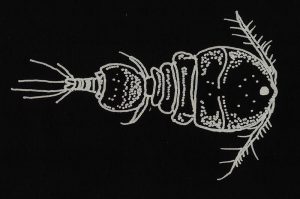
Figure 14. Ascetomolgus plicatus, a parasite of the non-photosynthetic soft coral Studeroites.
- Maximum Reported Size, male: 0.74mm
- Color: Opaque, red is eye, egg sacs are gray
- Order: Poecilostomatoida
- Family: Rhynchomolgidae
- Locality: Madagascar
- Reference: Humes and Stock, 1973
Colobomolgus cristatus
- Host: Sinularia leptoclados
- Order: Poecilostomatoida
- Family: Rhynchomolgidae
- Locality: Madagascar
- Reference: Humes and Stock, 1973
Colobomolgus dentipes
- Host: Sinularia humesi
- Order: Poecilostomatoida
- Family: Rhynchomolgidae
- Locality: Madagascar
- Reference: Humes and Stock, 1973
Colobomolgus laboutei
- Host: Sinularia leptoclados
- Maximum Reported Size, female: 0.96mm
- Maximum Reported Size, male: 0.63mm
- Color: Opaque in transmitted light, eye is red.
- Order: Poecilostomatoida
- Family: Rhynchomolgidae
- Locality: Madagascar
- Reference: Humes and Stock, 1973
Contomolgus lokobeensis
- Hosts: Studeriotes semperi and Dendronephthya stocki
- Maximum Reported Size, female: 1.49mm
- Maximum Reported Size, male: 1.22mm
- Color: Opaque in transmitted light, eye is red, egg sacs are gray
- Order: Poecilostomatoida
- Family: Rhynchomolgidae
- Locality: Madagascar
- Reference: Humes and Stock, 1973
Doridicola aculeatus (formerly Metaxymolgus aculeatus)
- Hosts: Lemnalia madagascarensis, Lemnalia sp., Litophyton arboretum, Nephthea aberrans , Nephthea amentacea, Nephthea bumasta, Nephthea crassa, Nephthea filamentosa, Nephthea galbuloides, Nephthea lanternaria, Nephthea sphaerophora, Nephthea tixierae, Stereonephthya nosybearia and Stereonephthya scaphis
- Order: Poecilostomatoida
- Family: Rhynchomolgidae
- Location: Madagascar
- Reference: Humes and Stock, 1973
Doridicola antheliae (formerly Metaxymolgus antheliae)
- Hosts: Anthelia glauca and Anthelia ternatana
- Maximum Reported Size, female: 1.14mm
- Maximum Reported Size, male: 0.85mm
- Color: Opaque in transmitted light, eye is red, egg sacs gray
- Order: Poecilostomatoida
- Family: Rhynchomolgidae
- Location: Madagascar
- Reference: Humes and Stock, 1973
Doridicola bulbipes
- Hosts: Alcyonium acaule and Parerythropodium coralloides
- Order: Poecilostomatoida
- Family: Rhynchomolgidae
- Locality: France, Spain
- Reference: Humes and Stock, 1973
Doridicola cincinnatus (formerly Metaxymolgus cincinnatus)
- Host: Cladiella pachyclados
- Maximum Reported Size, female: 1.63mm
- Maximum Reported Size, male: 1.43mm
- Color: Opaque, eye red, egg sacs gray
- Order: Poecilostomatoida
- Family: Rhynchomolgidae
- Location: Madagascar
- Reference: Humes, 1975
Doridicola cinctus
- Host: Psammogorgia ramosa
- Reference: Humes, 1975
Doridicola comparatus (formerly Metaxymolgus comparatus)
- Host: Xenia membranacea
- Maximum Reported Size, female: 2.24mm
- Maximum Reported Size, male: 1.82mm
- Color: Opaque, eye red, egg sacs gray
- Order: Poecilostomatoida
- Family: Rhynchomolgidae
- Location: Madagascar
- Reference: Humes, 1975
Doridicola foxi
- Hosts: Cladiella krempfi, Cladiella lacinosa, Cladiella latissima, Cladiella pachyclados, and Cladiella sphaerophora
- Order: Poecilostomatoida
- Family: Rhynchomolgidae
- Locality: Madagascar
- Reference: Humes and Stock, 1973
Doridicola hetaericus
- Hosts: Cladiella krempfi, Cladiella laciniosa, andCladiella polyclados
- Order: Poecilostomatoida
- Family: Rhynchomolgidae
- Location: Madagascar
- Reference: Humes, 1975
Doridicola mimicus (formerly Metaxymolgus mimicus)
- Host: Cladiella pachyclados
- Maximum Reported Size, female: 1.73mm
- Maximum Reported Size, male: 1.22mm
- Color: Opaque, eye red, egg sacs gray
- Order: Poecilostomatoida
- Family: Rhynchomolgidae
- Location: Madagascar
- Reference: Humes, 1975
Doridicola patulus
- Host: Sinularia mayi
- Order: Poecilostomatoida
- Family: Rhynchomolgidae
- Location: Madagascar
- Reference: Humes, 1975
Doridicola praelongipes (formerly Metaxymolgus praelongipes)
- Host: Xenia membranacea
- Maximum Reported Size, female: 2.30mm
- Maximum Reported Size, male: Unknown
- Color: Opaque, eye red, egg sacs gray
- Order: Poecilostomatoida
- Family: Rhynchomolgidae
- Location: Madagascar
- Reference: Humes, 1975
Doridicola singularipes
- Hosts:Parerythropodium rubiginosum and
- Parerythropodium sp.
- Order: Poecilostomatoida
- Family: Rhynchomolgidae
- Locality: Madagascar
- Reference: Humes and Frost, 1964
Doridicola spinulifer (formerly Metaxymolgus spinulifer)
- Hosts: Lemnalia africana, Lemnalia amabilis, Lemnalia cervicornis, Lemnalia crassicaulis, Lemnalia digitata, Lemnalia elegens, Lemnalia flava, Lemnalia longiramus, Lemnalia madagascarensis, Lemnalia tenuis, Paralemnalia clavata, Paralemnalia polydactyla, andParalemnalia thyrsoides
- Order: Poecilostomatoida
- Family: Rhynchomolgidae
- Locality: Madagascar
- Reference: Humes and Frost, 1964
Meringomolgus fascetus
- Hosts: Sinularia minima and Sinularia polydactyla
- Maximum Reported Size, female: 1.44mm
- Maximum Reported Size, male: 1.20mm
- Color: Opaque in transmitted light, eye is red and egg sacs are gray
- Order: Poecilostomatoida
- Family: Rhynchomolgidae
- Locality: Madagascar
- Reference: Humes and Stock, 1973
Meringomolgus devotus
- Host: Sinularia leptoclados
- Maximum Reported Size, female: 1.46mm
- Maximum Reported Size, male: 0.92mm
- Color: Opaque in transmitted light, eye is red and egg sacs are gray
- Order: Poecilostomatoida
- Family: Rhynchomolgidae
- Reference: Humes and Stock, 1973
Meringomolgus hamatus
- Hosts: Sinularia leptoclados, Sinularia humesi, and Sinularia maximus
- Order: Poecilostomatoida
- Family: Rhynchomolgidae
- Reference: Humes and Stock, 1973
Monomolgus unihastatus
- Host: Anthelia sp.
- Order: Poecilostomatoida
- Family: Rhynchomolgidae
- Color: Red eye
- Locality: Madagascar
- Reference: Humes and Stock, 1973
- Comment: Also found on Porites stony corals
Notoxynus mundus
- Host: Xenia membranacea
- Maximum Reported Size, female: 2.18mm
- Maximum Reported Size, male: 1.70mm
- Color: Slightly brownish, eye red, egg sacs gray
- Order: Poecilostomatoida
- Family: Rhynchomolgidae
- Location: New Caledonia
- Reference: Humes, 1975
Paradoridicola adelphus
- Host: Sinularia pendunculata, Sinularia polydactyla, and Sinularia whiteleggei
- Order: Poecilostomatoida
- Family: Rhynchomolgidae
- Reference: Humes and Stock, 1973
Paradoridicola glabripes
- Host: Xenia macrospiculata
- Order: Poecilostomatoida
- Family: Rhynchomolgidae
- Reference: Humes and Stock, 1973
Paradoridicola squamiger
- Host: Sinularia polydactyla and Sinularia whiteleggi
- Order: Poecilostomatoida
- Family: Rhynchomolgidae
- Reference: Humes and Stock, 1973
Paradoridicola sinulariae
- Host: Sinularia arborea
- Maximum Reported Size, female: 1.46mm
- Maximum Reported Size, male: 1.05mm
- Color: Opaque in transmitted light with a few red globules, the eye is red and egg sacs are opaque gray
- Order: Poecilostomatoida
- Family: Rhynchomolgidae
- Reference: Humes and Stock, 1973
Paradoridicola triquetrus
- Host: Anthelia gracilis
- Order: Poecilostomatoida
- Family: Rhynchomolgidae
- Reference: Humes and Stock, 1973
Paramolgus anomalus
- Host: ‘Alcyonacean tissue’
- Order: Poecilostomatoida
- Family: Rhynchomolgidae
- Locality: Southern coast of Arabia
- Reference: Humes and Stock, 1973
Paramolgus clavatus
- Hosts: Lemnalia longiramus, Lemnalia cervicornis, andLemnalia crassicaulis
- Order: Poecilostomatoida
- Family: Rhynchomolgidae
- Locality: Madagascar
- Reference: Humes and Stock, 1973
Paramolgus spathophorus
- Hosts: Sarcophyton glaucum, Sarcophyton trocheliophorum, and Sarcophyton acutangulum
- Order: Poecilostomatoida
- Family: Rhynchomolgidae
- Locality: Madagascar
- Reference: Humes and Stock, 1973
Paredromolgus decorus
- Hosts: Cladiella laciniosa, Cladiella latissima, and Cladiella sphaerophora
- Order: Poecilostomatoida
- Family: Rhynchomolgidae
- Reference: Humes and Stock, 1973
Parategastes conexus
- Host: Stereonephthya ulicoides
- Maximum Reported Size (female): 0.41mm

Figure 24. Parategastes conexus, a parasite known only from the soft coral Stereonephthya.
- Maximum Reported Size (male): 0.43mm
- Color: Opaque pale grayish tan, eye red, genital area bright red, egg sacs gray.
- Order: Harpacticoida
- Family: Tegastidae
- Locality: Moluccas Islands
- Reference: Humes, 1984
Zamolgus acanthodes
- Host: Sinularia arborea
- Maximum Reported Size, female: 1.09mm
- Maximum Reported Size, male: 0.78mm
- Color: Translucent, with a few red globules within the prosome, the eye is red and the egg sacs are opaque
- Locality: Madagascar
- Order: Poecilostomatoida
- Family: Rhynchomolgidae
- Reference: Humes and Stock, 1973
Zamolgus cracens
- Host: Cespitularia multipinnata
- Locality: Madagascar
- Order: Poecilostomatoida
- Family: Rhynchomolgidae
- Reference: Humes and Dojiri, 1979
Zamolgus tridens
- Host: Cespitularia turgida
- Locality: Madagascar
- Order: Poecilostomatoida
- Family: Rhynchomolgidae
- Reference: Humes and Stock, 1973
Parasites of Anemones
Anemones are quite popular inhabitants of reef aquaria, if sometimes only to act as a home to anemone fishes. We often think of successful maintenance of anemones as meeting their photosynthetic and nutritional requirements. Is there more we should consider? Can an active copepod infestation harm anemones, either through predation or their acting as vectors of disease?
Aspidomolgus stoichactinus
- Host: Stichodactyla gigantea (formerly Stoichactis helianthus)
- Order: Poecilostomatoida
- Family: Rhynchomolgidae
- Locality: Barbados, Puerto Rico, Jamaica and the Bahamas
- Reference: Humes and Stock, 1973
Critomolgus actiniae (formerly Doridicola actiniae)
- Hosts: Actinia concentrica, Anemonia sculata, andActinia equina
- Order: Poecilostomatoida
- Family: Rhynchomolgidae
- Locality: England, France, Italy
- Reference: Humes and Stock, 1973
Doridicola antheae
- Host: Anemonia sculata
- Note: There is some doubt about the taxonomic status of this copepod – further descriptions are needed.
Doridicola cuspis (formerly Metaxymolgus cuspis)
- Hosts: Radianthis ritteri and Stoichactis giganteum (now Stichodactyla giganteum)
- Order: Poecilostomatoida
- Family: Rhynchomolgidae
- Location: Madagascar
- Reference: Humes and Stock, 1973
Doridicola gemmatus
- Host: Stoichactis giganteum (now Stichodactyla giganteum)
- Order: Poecilostomatoida
- Family: Rhynchomolgidae
- Locality: Madagascar
- Reference: Humes and Stock, 1973
Doridicola magnificus
- Host: Stichodactyla giganteum (formerly Stoichactis giganteum)
- Order: Poecilostomatoida
- Family: Rhynchomolgidae
- Locality: Madagascar
- Reference: Humes and Stock, 1973
Doridicola mayorae
- Host: Stoichactis haddoni
- Order: Poecilostomatoida
- Family: Rhynchomolgidae
- Locality: Madagascar
- Reference: Humes and Stock, 1973
Paranthessius anemoniae
- Hosts: Anemonia sp., Anemonia sculata
- Order: Poecilostomatoida
- Family: Rhynchomolgidae
- Locality: France, Italy
- Reference: Humes and Stock, 1973
Parasites of Zoanthids

Figure 29. Zoanthids are subject to copepod infestations. Photo courtesy of Steve Ruddy (www.coralreefecosystems.com).
Zoanthids have achieved a cult following among many reef aquarists, and with good reason. Their sometimes intense coloration combined with relative ease of maintenance has made them perennial favorites. However, successful husbandry should consider all relevant factors, including parasites.
Doridicola inaequalis
- Hosts: Palythoa liscia and Palythoa tuberculosa
- Order: Poecilostomatoida
- Family: Rhynchomolgidae
- Locality: Madagascar
- Reference: Humes and Ho, 1966 in Humes and Stock, 1973
Indomolgus brevisetosus
- Hosts: Palythoa tuberculosa and Palythoa liscia
- Order: Poecilostomatoida
- Family: Rhynchomolgidae
- Locality: Madagascar
- Reference: Humes and Stock, 1973
Indomolgus diversus
- Hosts: Palythoa tuberculosa and Palythoa liscia
- Order: Poecilostomatoida
- Family: Rhynchomolgidae
- Locality: Madagascar
- Reference: Humes and Ho, 1966
Temnomolgus erynotus
- Host: Palythoa tuberculosa
- Order: Poecilostomatoida
- Family: Rhynchomolgidae
- Locality: Madagascar
- Reference: Humes and Ho, 1966 in Humes and Stock, 1973
Parasites of False Corals (Corallimorpharians)
The grouping of ‘false corals’ includes genera Discosoma, Rhodactis, and many others. Although limited information is available, we as hobbyists should believe that all false corals species are potential victims of copepod parasites.
Paramolgus politus
- Host: Rhodactis rhodostoma
- Order: Poecilostomatoida
- Family: Rhynchomolgidae
- Locality: Madagascar
- Reference: Humes and Stock, 1973
Paramolgus simulans
- Host: Rhodactis rhodostoma
- Order: Poecilostomatoida
- Family: Rhynchomolgidae
- Locality: Madagascar
- Reference: Humes and Stock, 1973
Conclusions
It should be apparent that many (if not most or even all) marine invertebrates popular in reef aquaria are subject to infestations by parasitic copepods. However, we can only speculate at the amount of harm they actually cause.
As a very rough analogy, we can examine how a common parasite might affect its host. Our example is an insect – a flea. They are an inconvenience to many animals but usually not fatal. However, under different circumstances the flea is a vector of deadly disease. Consider the role of fleas in the transmission of bubonic plague (the Black Death) to humans. Fleas were carriers of bacteria obtained while feeding on the blood of rats, and transmitted this ailment to humans.
Are aquatic copepods capable of transmitting disease among marine invertebrates? Ivanenko and Smurov (1996) raise the interesting possibility that copepods might introduce pathogens to its host. This could perhaps explain why some copepods infestations are relatively harmless, while seemingly mild cases of parasitism cause rapid decline and death of the host. As a footnote, the pathogenic bacteria Vibrio has been found attached to some copepods’ exoskeletons (though not specifically ‘coral’ copepods or any Vibrio species known to infect scleractinians).
Disease issues aside, the potential of harm to the coral host by parasites is likely best considered on a case by case basis. It is difficult to believe a large soft coral existing under conditions of optimal lighting, water motion and nutrition could be significantly harmed by even a severe parasite infestation. On the other hand, non-photosynthetic corals are often nutritionally deprived due to either lack of proper food or poor water motion (or their synergistic effects). In this case it seems quite possible that the coral animal could have difficulty in coping with the amount of energy required for tissue repair and maintenance.
The amount of trauma inflicted by parasitic copepods should be considered. A small amount of damage to the thin layers of tissues covering a small-polyp stony coral (such as Acropora species) could possibly have more of an impact on its health than, say, the amount of damage done to a fleshy soft coral.
With as much information as we have, our understanding of soft coral parasites leaves much to be desired. At present, even the acknowledgement of their existence by hobbyists is extremely rare, much less confirmations of these copepods’ presence in aquaria. Do these parasites exist on the external portions of corals, or are they endoparasites inhabiting the polyp guts?
We have little reason to believe that existing treatments and quarantine/pretreatment protocols would not be effective against these ‘bugs’. However, this too remains to be proven.
This article concludes our brief and incomplete look at copepods capable of potentially harming our captive animals. However, the series will continue with reports of other parasites, including nudibranchs, sea spiders and other ‘creepy-crawlies’.
Acknowledgements
Many thanks to Steve Ruddy of Coral Reef Ecosystems (www.coralreefecosystems.com) and Michael P. Janes of AquaTouch (www.aquatouch.com) for providing photographs for this article.
Comments? Questions? Please leave correspondence below.
| Invertebrate Host | Parasite |
|---|---|
| Acanthogorgia aspera | Acanthomolgus astrictus |
| Acanthogorgia aspera | Thamnomolgus robustus |
| Actinia concentrica | Critomolgus actiniae |
| Actinia equina | Critomolgus actiniae |
| Alcyonacean tissue’ | Paramolgus anomalus |
| Alcyonium acaule | Doridicola bulbipes |
| Anemonia sculata | Critomolgus actiniae |
| Anemonia sculata | Doridicola antheae |
| Anemonia sculata | Paranthessius anemoniae |
| Anthelia glauca | Doridicola antheliae |
| Anthelia gracilis | Paradoridicola triquetrus |
| Anthelia sp. | Monomolgus unihastatus |
| Anthelia ternatana | Doridicola antheliae |
| Antillogorgia ascerosa | Acanthomolgus cuneipes |
| Antillogorgia elastica | Acanthomolgus bilobipes |
| Antipathes | Thamnomolgus robustus |
| Antipathes abies | Paramolgus insectus |
| Antipathes exicoides | Paramolgus constrictus |
| Antipathes myriophylla | Paramolgus insectus |
| Antipathes myriophyllia | Thamnomolgus nodulus |
| Antipathes spinescens | Paramolgus insectus |
| Cespitularia multipinnata | Zamolgus cracens |
| Cespitularia turgidia | Zamolgus tridens |
| Cladiella krempfi | Critomolgus foxi |
| Cladiella krempfi | Doridicola hetaericus |
| Cladiella laciniosa | Doridicola hetaericus |
| Cladiella laciniosa | Paredomolgus decorus |
| Cladiella lacinosa | Critomolgus foxi |
| Cladiella latissima | Critomolgus foxi |
| Cladiella latissima | Paredomolgus decorus |
| Cladiella pachyclados | Critomolgus foxi |
| Cladiella pachyclados | Doridicola cincinnatus |
| Cladiella pachyclados | Doridicola hetaericus |
| Cladiella pachyclados | Doridicola mimicus |
| Cladiella sphaerophora | Critomolgus foxi |
| Cladiella sphaerophora | Paredomolgus decorus |
| Coelogorgia palmosa | Paramolgus clavatus |
| Coelogorgia palmosa | Telestacicola angoti |
| Dendronephthya cirsium | Acanthomolgus varirostratus |
| Dendronephthya koellikeri | Acanthomolgus exilipes |
| Dendronephthya koellikeri | Acanthomolgus gentilis |
| Dendronephthya koellikeri | Acanthomolgus varirostratus |
| Dendronephthya lokobeensis | Acanthomolgus gentilis |
| Dendronephthya lokobeensis | Acanthomolgus varirostratus |
| Dendronephthya mucronata | Acanthomolgus cuneipes |
| Dendronephthya mucronata | Acanthomolgus exilipes |
| Dendronephthya mucronata | Acanthomolgus gentilis |
| Dendronephthya mucronata | Acanthomolgus varirostratus |
| Dendronephthya puetteri | Acanthomolgus boholensis |
| Dendronephthya regia | Acanthomolgus exilipes |
| Dendronephthya regia | Acanthomolgus varirostratus |
| Dendronephthya sp. | Acanthomolgus varirostratus |
| Dendronephthya speciosa | Acanthomolgus exilipes |
| Dendronephthya speciosa | Acanthomolgus exilipes |
| Dendronephthya speciosa | Acanthomolgus varirostratus |
| Dendronephthya stocki | Acanthomolgus exilipes |
| Dendronephthya stocki | Acanthomolgus varirostratus |
| Dendronephthya stocki | Contomolgus lokobeensis |
| Echinogorgia sassapo | Acanthomolgus affinis |
| Echinogorgia sassapo | Acanthomolgus combinatus |
| Eunicella stricta | Doridicola botulosus |
| Heteroxenia elisabethae | Acanthomolgus verseveldti |
| Heteroxenia fuscescens | Acanthomolgus verseveldti |
| Hippopus hippopus | Anthessius amicalis |
| Lemnalia africana | Doridicola spinulifer |
| Lemnalia africana | Doridicola spinulifer |
| Lemnalia amabilis | Doridicola spinulifer |
| Lemnalia amabilis | Doridicola spinulifer |
| Lemnalia cervicornis | Doridicola spinulifer |
| Lemnalia cervicornis | Doridicola spinulifer |
| Lemnalia cervicornis | Paramolgus clavatus |
| Lemnalia crassicaulis | Doridicola spinulifer |
| Lemnalia crassicaulus | Doridicola spinulifer |
| Lemnalia crassicaulus | Doridicola spinulifer |
| Lemnalia crassicaulus | Paramolgus clavatus |
| Lemnalia digitata | Doridicola spinulifer |
| Lemnalia digitata | Doridicola spinulifer |
| Lemnalia digitata | Doridicola spinulifer |
| Lemnalia elegans | Doridicola spinulifer |
| Lemnalia elegans | Doridicola spinulifer |
| Lemnalia flava | Doridicola spinulifer |
| Lemnalia flava | Doridicola spinulifer |
| Lemnalia humesi | Acanthomolgus fissisetiger |
| Lemnalia longiramus | Doridicola spinulifer |
| Lemnalia longiramus | Doridicola spinulifer |
| Lemnalia longiramus | Doridicola spinulifer |
| Lemnalia longiramus | Paramolgus clavatus |
| Lemnalia madagascarensis | Doridicola spinulifer |
| Lemnalia madagascarensis | Doridicola spinulifer |
| Lemnalia madagascarensis | Doridicola spinulifer |
| Lemnalia sp. | Doridicola spinulifer |
| Lemnalia tenuis | Doridicola spinulifer |
| Litophyton arboreum | Doridicola aculeatus |
| Lobophytum crassum | Ansiomolgus insolens |
| Muricea california | Acanthomolgus eminulus |
| Muricea laxa | Acanthomolgus aequiseta |
| Muricella rubra robusta | Telestacicola angoti |
| Nephthea aberrans | Doridicola aculeatus |
| Nephthea amentacea | Doridicola aculeatus |
| Nephthea bumasta | Doridicola aculeatus |
| Nephthea crassa | Doridicola aculeatus |
| Nephthea filamentosa | Doridicola aculeatus |
| Nephthea filamentosa | Doridicola aculeatus |
| Nephthea galbuloides | Acanthomolgus abonensis |
| Nephthea lanternaria | Doridicola aculeatus |
| Nephthea sphaerophora | Doridicola aculeatus |
| Nephthea tixierae | Doridicola aculeatus |
| Palythoa liscia | Doridicola inaequalis |
| Palythoa liscia | Indomolgus brevisetosus |
| Palythoa liscia | Indomolgus diversus |
| Palythoa tuberculosa | Doridicola inaequalis |
| Palythoa tuberculosa | Indomolgus brevisetosus |
| Palythoa tuberculosa | Indomolgus diversus |
| Palythoa tuberculosa | Temnomolgus erynotus |
| Paralemnalia clavata | Doridicola spinulifer |
| Paralemnalia polydactyla | Doridicola spinulifer |
| Paralemnalia thyrsoides | Doridicola spinulifer |
| Paramuricea chameleon | Doridicola botulosus |
| Parerythrodium fulvum | Monomolgus unihastatus |
| Parerythropodium coralloides | Doridicola bulbipes |
| Parerythropodium fulvum | Monomolgus unihastatus |
| Parerythropodium rubiginosum | Doridicola singularipes |
| Parerythropodium sp. | Doridicola singularipes |
| Plexaura homomalla | Acanthomolgus arctatipes |
| Psammogorgia ramosa | Doridicola cinctus |
| Pseudoplexaura porosa | Acanthomolgus bayeri |
| Pseudopterogorgia americana | Acanthomolgus dionyx |
| Radianthus ritteri | Doridicola cuspis |
| Rhodactis rhodostoma | Paramolgus politus |
| Rhodactis rhodostoma | Paramolgus simulans |
| Sarcophyton acutangulum | Paramolgus spathophorus |
| Sarcophyton creriplicatum | Anisomolgus protentus |
| Sarcophyton ehrenbergi | Ansiomolgus incisus |
| Sarcophyton glaucum | Ansiomolgus protentus |
| Sarcophyton glaucum | Paramolgus spathophorus |
| Sarcophyton globosum | Ansiomolgus protentus |
| Sarcophyton trocheliophorum | Paramolgus spathophorus |
| Sinularia arborea | Paradoridicola sinulariae |
| Sinularia arborea | Zamolgus acanthodes |
| Sinularia humesi | Cologomolgus dentipes |
| Sinularia humesi | Meringomolgus hamatus |
| Sinularia leptoclados | Cologomolgus cristatus |
| Sinularia leptoclados | Cologomolgus laboutei |
| Sinularia leptoclados | Meringomolgus facetus |
| Sinularia leptoclados | Meringomolgus hamatus |
| Sinularia maxima | Meringomolgus hamatus |
| Sinularia mayi | Doridicola patulus |
| Sinularia minima | Meringomolgus devotus |
| Sinularia pedunculata | Paradoridicola adelphus |
| Sinularia polydactyla | Meringomolgus facetus |
| Sinularia polydactyla | Paradoridicola adelphus |
| Sinularia polydactyla | Paradoridicola squamiger |
| Sinularia whiteleggi | Paradoridicola adelphus |
| Sinularia whiteleggi | Paradoridicola squamiger |
| Siphonogorgia pichoni | Acanthomolgus hians |
| Siphonogorgia pichoni | Acanthomolgus longispinifer |
| Solenocaulon tortuosm | Acanthomolgus hales |
| Stereonephthya acaulis | Acanthomolgus cuneipes |
| Stereonephthya acaulis | Acanthomolgus fissisetiger |
| Stereonephthya acaulis | Acanthomolgus gentilis |
| Stereonephthya cordylophora | Acanthomolgus exilipes |
| Stereonephthya cordylophora | Acanthomolgus gentilis |
| Stereonephthya cordylophora | Acanthomolgus varirostratus |
| Stereonephthya nosybearia | Doridicola aculeatus |
| Stereonephthya papyracea | Acanthomolgus fissisetiger |
| Stereonephthya scaphis | Doridicola aculeatus |
| Stereonephthya sp. | Parategastes conexus |
| Stichodactyla gigantea | Aspidomolgus stoichactinus |
| Stichodactyla giganteum | Critomolgus gemmatus |
| Stichodactyla giganteum | Critomolgus magnificus |
| Stichodactyla giganteum | Doridicola cuspis |
| Stoichactis haddoni | Doridicola myorae |
| Studeroides semperi | Ascetomolgus plicatus |
| Studeroides semperi | Contomolgus lokobeensis |
| Tridacna gigas | Anthessius alatus |
| Tridacna gigas | Lichomolgus tridacnae |
| Tridacna maxima | Anthessius alatus |
| Tridacna maxima | Anthessius amicalis |
| Tridacna sp. | Paclabius tumidus |
| Tridacna squamosa | Anthessius alatus |
| Tridacna squamosa | Anthessius amicalis |
| Tridacna squamosa | Anthessius solidus |
| Tridacna squamosa | Lichomolgus tridacnae |
| Tridacna squamosa | Paclabius tumidus |
| Umbellulifera striata | Acanthomolgus gentilis |
| Umbellulifera striata | Acanthomolgus plantei |
| Xenia lepida | Acanthomolgus verseveldti |
| Xenia macrospiculata | Paradoridicola glabripes |
| Xenia membranacea | Doridicola comparatus |
| Xenia membranacea | Doridicola praelongipes |
| Xenia membranacea | Notoxynus mundus |
| Xenia viridis | Paradoridicola glabripes |
References
- Fatheree, J., 2006. Giant Clams in the Sea and the Aquarium. The Biology, Identification, and Aquarium Husbandry of Tridacnid Clams. Liquid Medium, Tampa. 227 pp.
- Kossmann, R., 1877. Entomostraca (l. Thiel: Lichomolgidae). In: Zool. Ergeb. Reise Küstengelb. Rothen Meeres, erste Hälfte, IV: 1-24.
- Heslinga, G., T. Watson and T. Isamu, 1990. Giant Clam Farming. Pacific Fisheries Development Foundation (NMFS/NOAA), Honolulu, Hawaii. 179 pp.
- Humes, A., 1975. Cyclopoid copepods (Lichomolgidae) associated with alcyonaceans in New Caledonia. Smithsonian Contributions to Zoology, No. 191. Smithsonian Institution Press, Washington, DC.
- Humes, A., and J. Stock, 1973. A revision of the Family Lichmolgidae Kossmann, 1877, cycloid copepods mainly associated with marine invertebrates. Smithsonian Contributions to Zoology, No. 127. Smithsonian Institution Press, Washington, DC.
- Humes, A., 1973. Cyclopoid copepods associated with marine bivalve mollusks in New Caledonia. Cah. O.R.S.T.O.M., sér. Océanogr., Vol. XI, 1:3-25.
- Humes, A., 1990. Synopsis of Lichomolgid copepods (Poecilostomatoid) associated with soft corals (Alcyonacea) in the tropical Indo-Pacific. Zool. Verh., 266:1-201.
- Humes, A., 1973. Cyclopoid copepods of the genus Acanthomolgus (Lichomolgidae) associated with gorgonians in Bermuda. J. Nat. Hist. London, 7(1):85-115.
- Humes, A. and G. Ewbel, 1977. Cyclopoid copepods of the genus Acanthomolgus (Lichomolgidae) associated with a gorgonian in California. Trans. Amer. Microsc. Soc., 96(1): 1-12.
- Kim, I., 2005. Four new species of copepods (Crustacea) associated with gorgonacean corals (Cnidaria) from Bohol, Phillipines. Korean J. Syst. Zool., 21(2):121-191.
- Kim, I., 2007. Copepods (Crustacea) associated with marine invertebrates from the Moluccas. Korean J. Systemat. Zool., Special Issue 6:1-126.
- Stock, J., 1975. On twelve species of the genus Acanthomolgus (Copepoda: Cyclopoida: Lichomolgidae) associated with West Indian octocorals. Bijdragen tat de Dierkunde. 45(2): 237-269


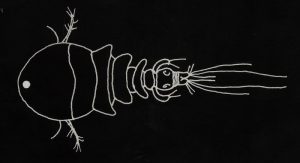
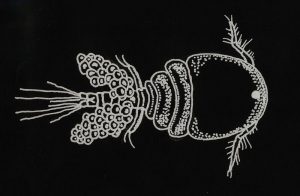
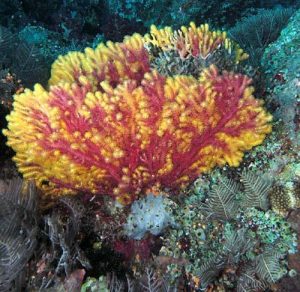

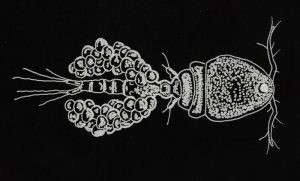


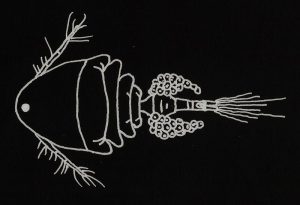
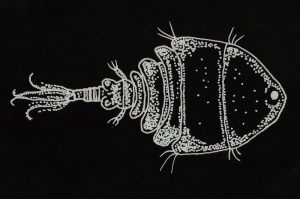

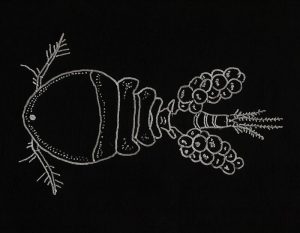
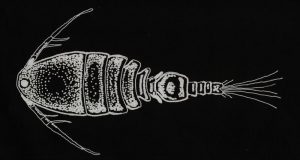
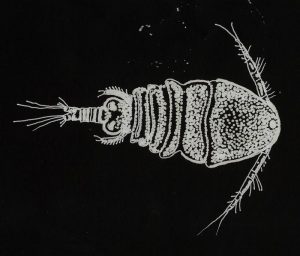
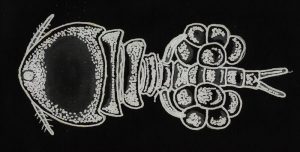






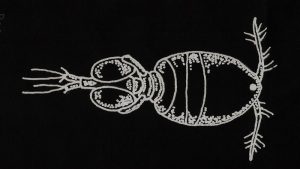
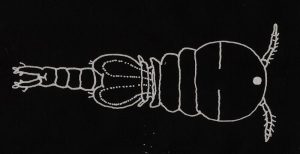
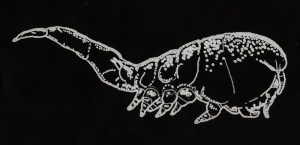
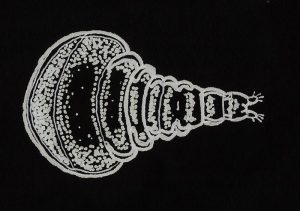
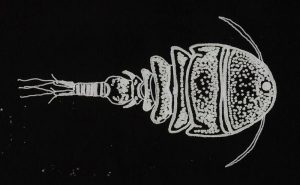

0 Comments